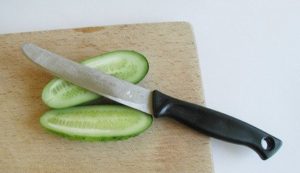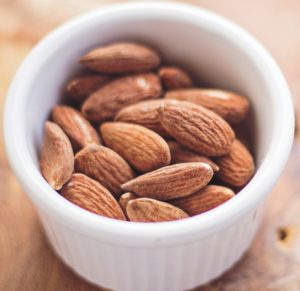Gil came into my office and was sure I was going to be stumped. After all, he is relatively young, only 34 years old and does everything right. He exercises formally three times a week, including aerobic and muscle building exercise.
 He makes sure to do at least 35 minutes of brisk walking on two other days. Gil’s listened to all of our good advice regarding his eating habits. He never eats food with trans-fats and stays far away from high fructose corn syrup. Gil uses whole grains and eats an abundance of vegetables and fruits. The only time Gil has any type of cake or cookie is at one meal on Shabbat, and even that is very limited. All in all, he maintains a very healthy and balanced diet.
He makes sure to do at least 35 minutes of brisk walking on two other days. Gil’s listened to all of our good advice regarding his eating habits. He never eats food with trans-fats and stays far away from high fructose corn syrup. Gil uses whole grains and eats an abundance of vegetables and fruits. The only time Gil has any type of cake or cookie is at one meal on Shabbat, and even that is very limited. All in all, he maintains a very healthy and balanced diet.
Yet, Gil has made an appointment because he is 10 kilo overweight and he just can’t figure out why. After my dietician and I did our initial workups, we both agreed that Gil only has one problem. He simply eats too much. The food might be healthy and full of variety, but when you eat too much, you eventually pay for it.
Portion control
With all the reasons why our society has become so overweight, one thing that has always mattered still matters—portion size. The amount of calories we eat and how many we expend through activity, exercise, and metabolism makes a difference. Mastering portion control can be a challenge, yet it is so important!
Imagine that you see a dietician and get a food plan for in order to lose weight. All in all, when you take a look at your plan, you have a total of 28 portions of carbs, proteins, fats, and fruits. We’ll say your vegetables are not counted for now. You have received instructions on what a portion size is in each category of food. But then you are guilty of portion distortion. You are only adding 10% more food to each portion of food. However, that means that every day you are now eating close to 3 portions more than you need to eat to lose weight. This translates into 21 extra portions per week! Extra portions will prevent someone from losing weight and possibly even cause weight gain.
According to Registered Dietician Dr. Lisa Young, “eating less through better portion control is one of the best strategies people can take towards dropping pounds.”
In a recent article by dietician Mathew Kadey, MS he recommends 8 concrete steps in order to keep your portions under control.
-
Pay Attention

Being busy with other things, like being on the phone or reading a book, while noshing is not the innocent habit you think it is. A 2017 study in the Journal of the Academy of Nutrition and Dietetics found that adults who never engage in multimedia during meals were 37% less likely to be obese than their peers who eat in front of a computer screen. “Anytime your eyes and brain are distracted when food is sitting in front of you, you’re more likely to munch mindlessly and eat more than you need,” says Dr. Young.
-
Keep your Distance
At your next meal, try this suggestion from Cornell University: Keep serving dishes away from the dining table. The scientists found that women and men ate on average 20% and 29% fewer calories, respectively, when food was served from the countertop rather than from their table. It’s a case of “out of sight, out of mind.”
-
Downsize your Dinnerware
The size of plates, bowls and glasses in American households has increased over the decades. This is a problem for waistlines, considering we eat 92% of the food we make. People served themselves 77% more pasta when provided larger bowls compared with using a medium-sized bowl, states a study in the Journal of Nutrition Education and Behavior. Outfit your kitchen with smaller plates (8- or 9-inch instead of the typical 10- to 12-inch size), bowls, and drinking glasses or mugs to make small portions seem more substantial.
-
Scale Back
You can’t trim your portions until you come to grips with how much you’re actually eating. Using a digital food scale can help you get a better sense of what the recommended 3 ounces of chicken or 1 ounce of cheese looks like. Measuring cups and spoons for items like granola and olive oil can also help keep portions in line. Eyeballing is fine if you stay accurate. We provide our clients with papers and descriptions of what a portion looks like.
-
Cut it up
To cut calories from your diet, cut up your food. Studies show that slicing up items such as pizza and bagels into several smaller pieces decreases food consumption and calorie intake. We tend to think of one piece of food, like a steak, bagel or muffin, as an appropriate serving size regardless of its size. “Slicing foods into several units can trick your brain into thinking you’re eating more than you actually are, so you’re more likely to be satisfied with less,” Young adds.
-
Turn on those lights

Research from Cornell University found that subjects who dined in a dark room consumed 36 % more food and were less accurate in estimating how much they consumed than those who ate in a bright room. A bright space can boost alertness to encourage mindful eating, while dimmer lighting may loosen eating inhibitions and mess with knowing when you are full.
-
Slow Down
Eating slowly helps achieve better portion control. According to a study, people who ate a meal in 22 minutes consumed 88 fewer calories and felt less hungry than those who cleaned their plates in nine minutes. “Pacing yourself allows time for your body to register satiety signals and prevents calories from adding up without realizing it,” says Young. Put utensils down between bites, chew food more thoroughly, engage in conversation, drink water with meals.
-
Watch Out for “Healthy” choices
Don’t give foods like avocado, quinoa, granola, and smoothies a “free pass.” Research shows that edibles portrayed as “healthy” can tempt you to let your guard down and overeat. It may be that people think of healthy foods as less filling or lower in calories, so they end up overeating the “good” foods. And this was part of Gil’s troubles.
Gil continued his exercise routine and we made very few changes in regard to the type of food he ate. We did recommend that he add 2 small snacks in between his meals and we taught him what a portion is. Because he began to understand that how much you eat is just as important as how healthy the food is, he slowly began to lose weight. Gil kept his focus and practiced mindful eating skills. He dropped 2.5 kilo in his first 4 weeks and then another 2 kilos in the month afterwards. He continues to watch his portion sizes and overall caloric intake, and continues to lose weight the way we are supposed to—slowly and steadily. Controlling the size of our food portions will “add hours to your day, days to your year, and years to your life.”



Leave A Comment